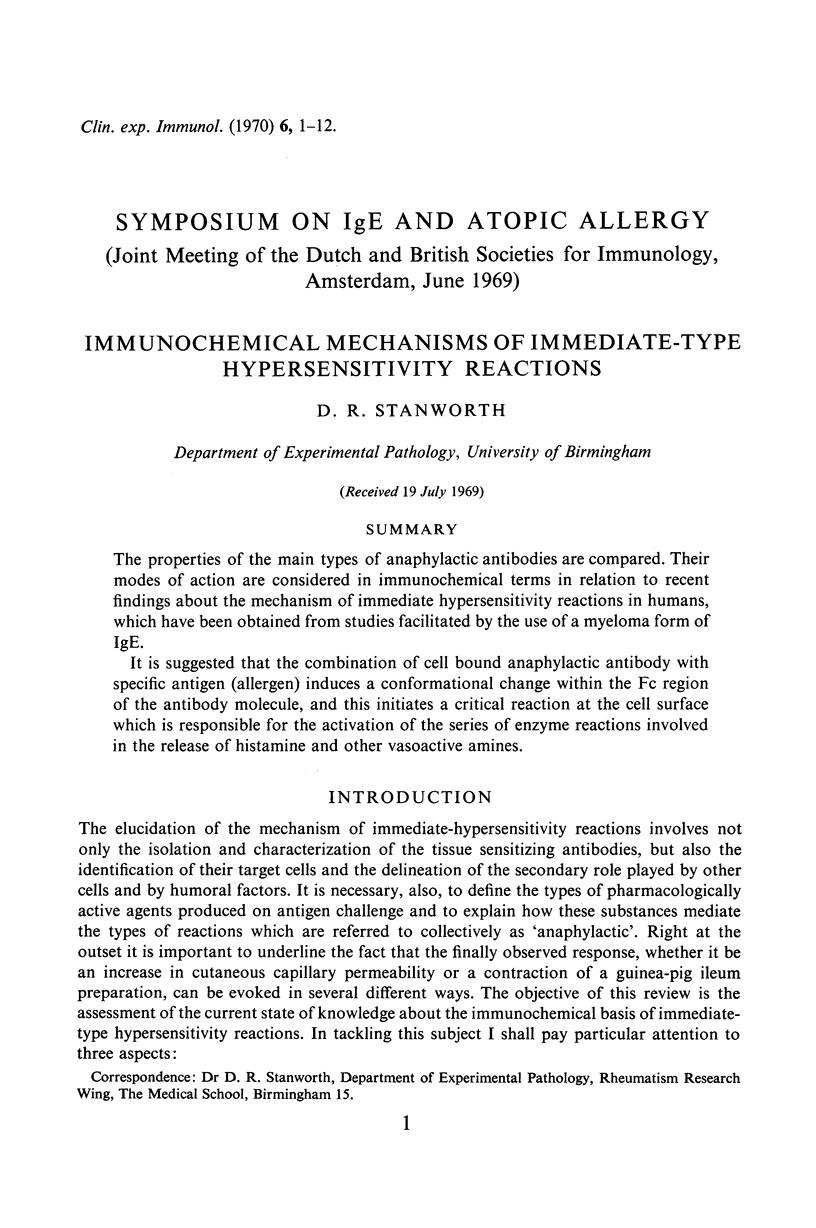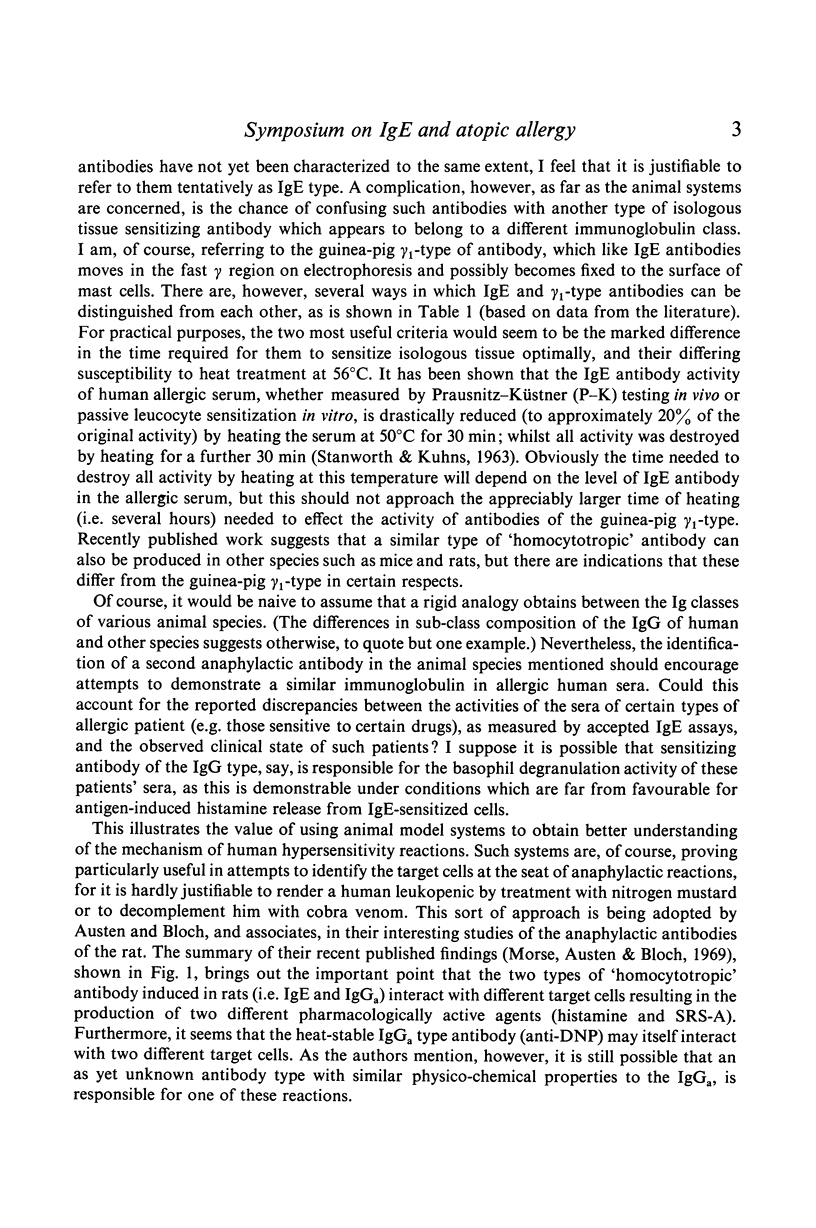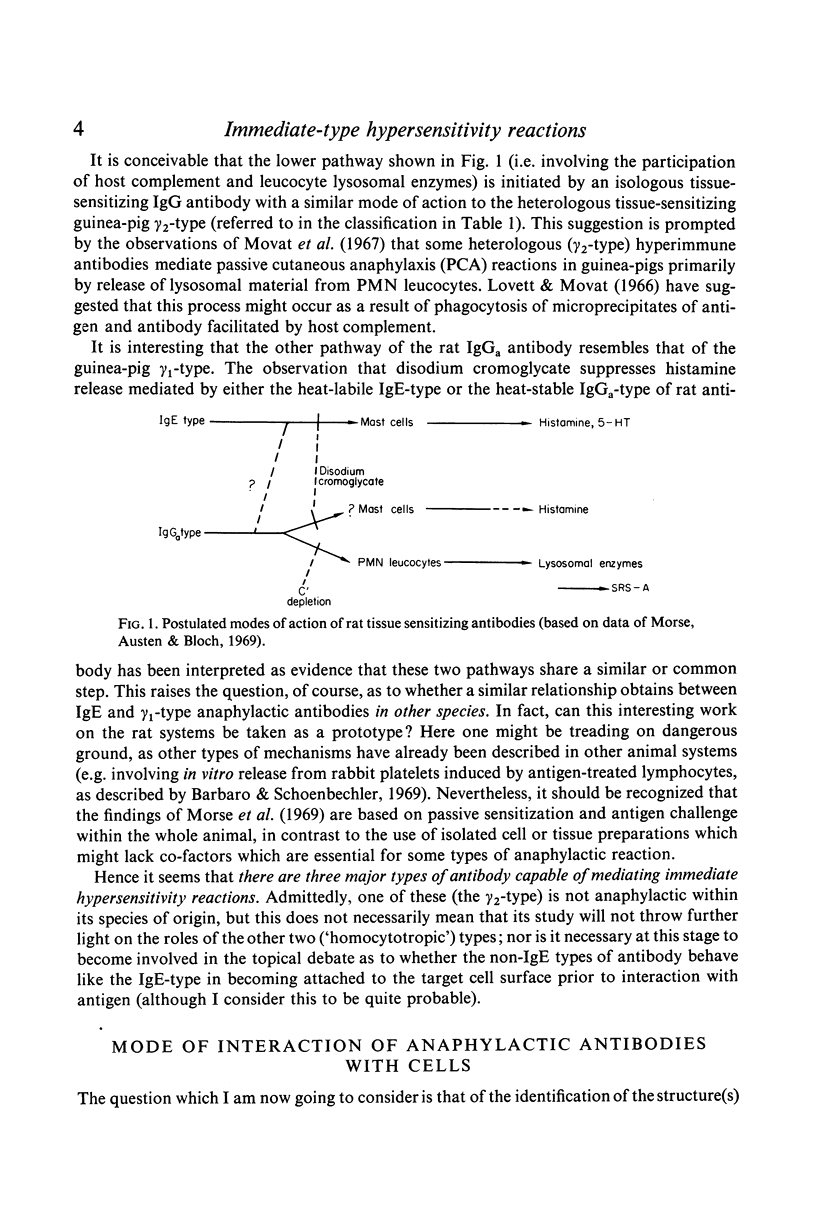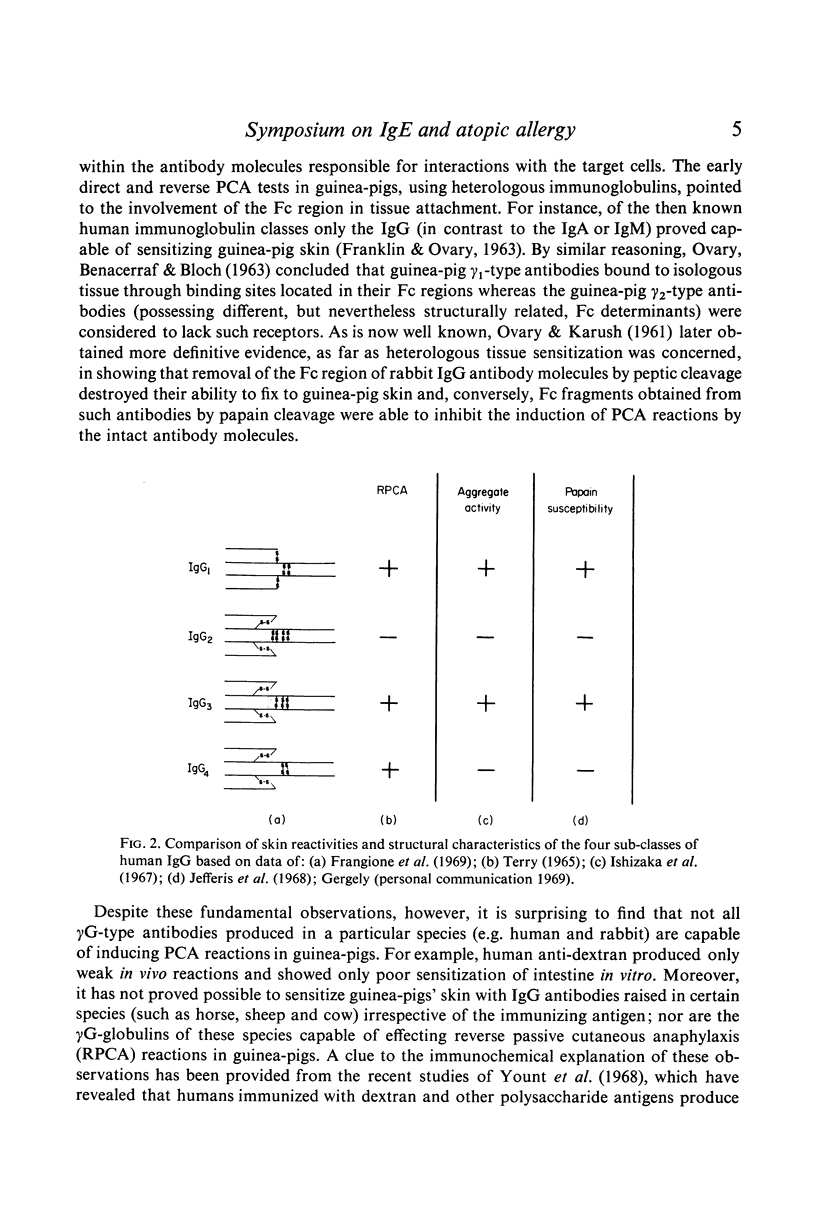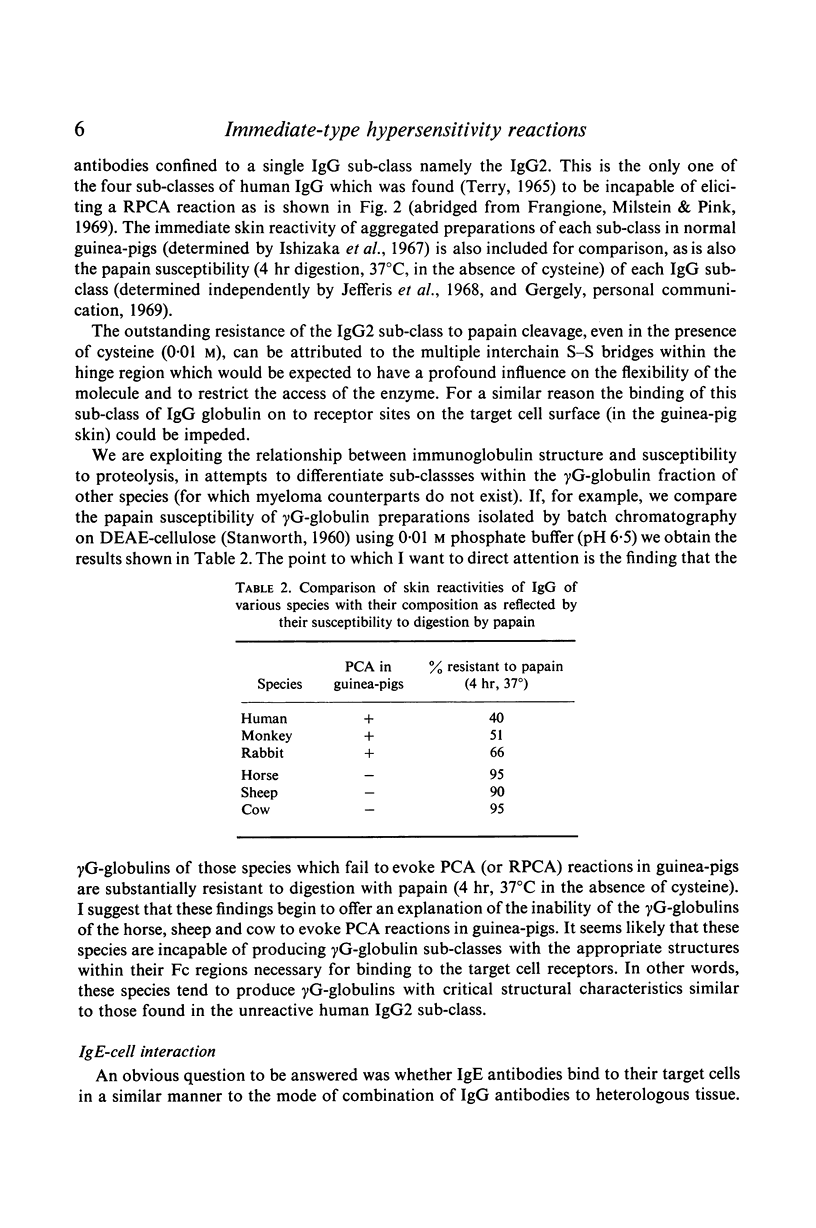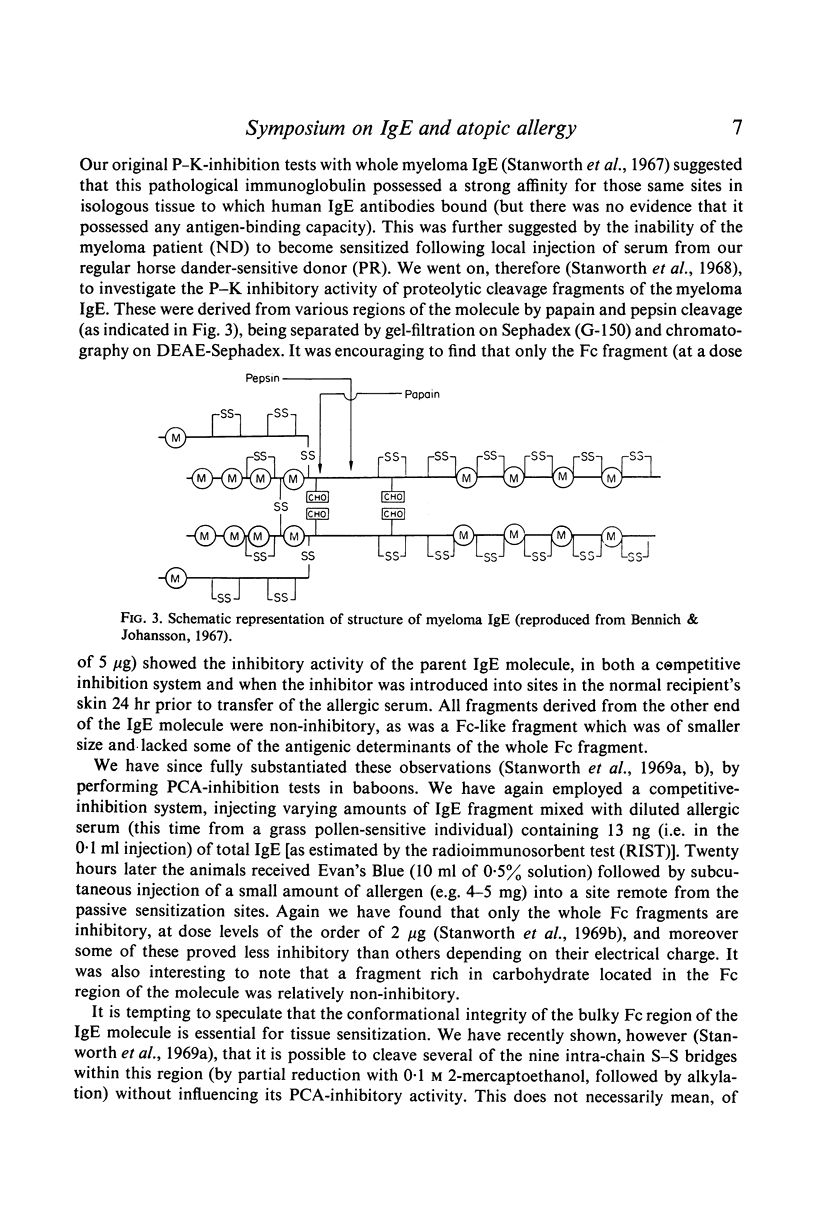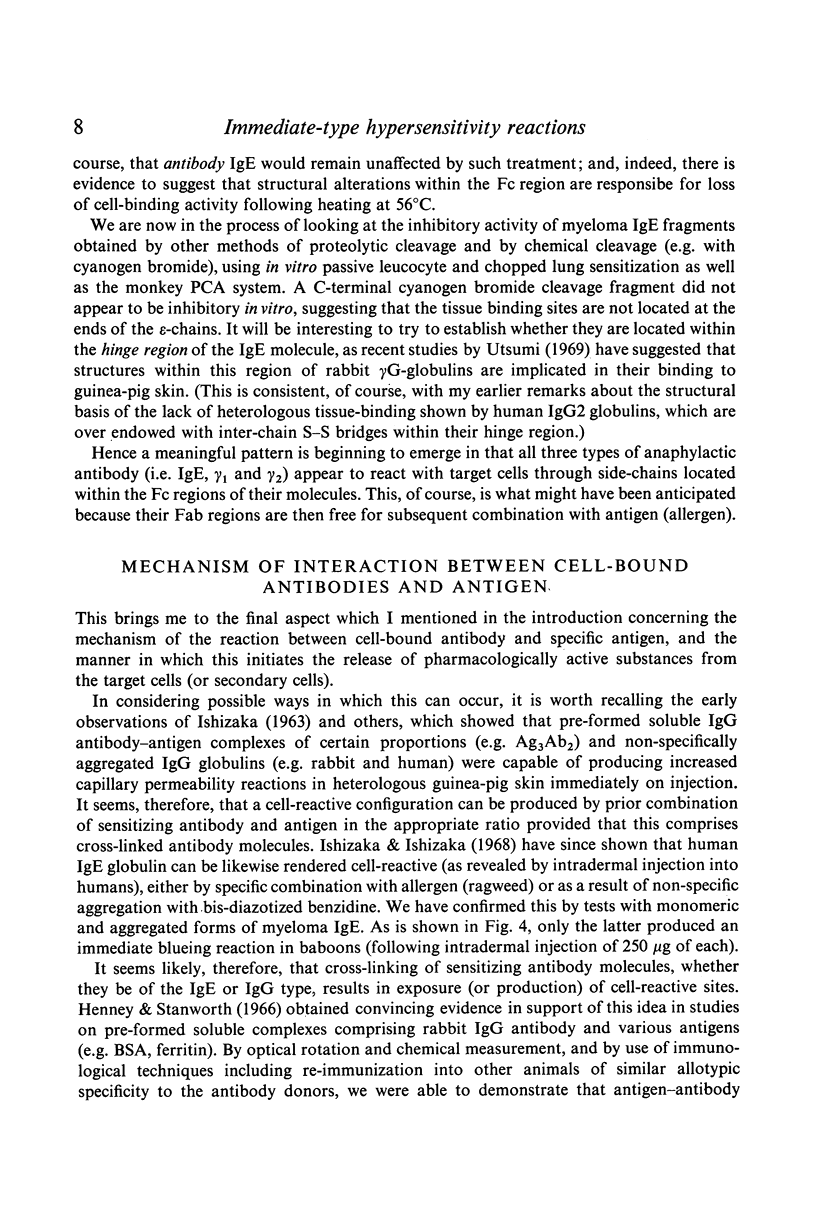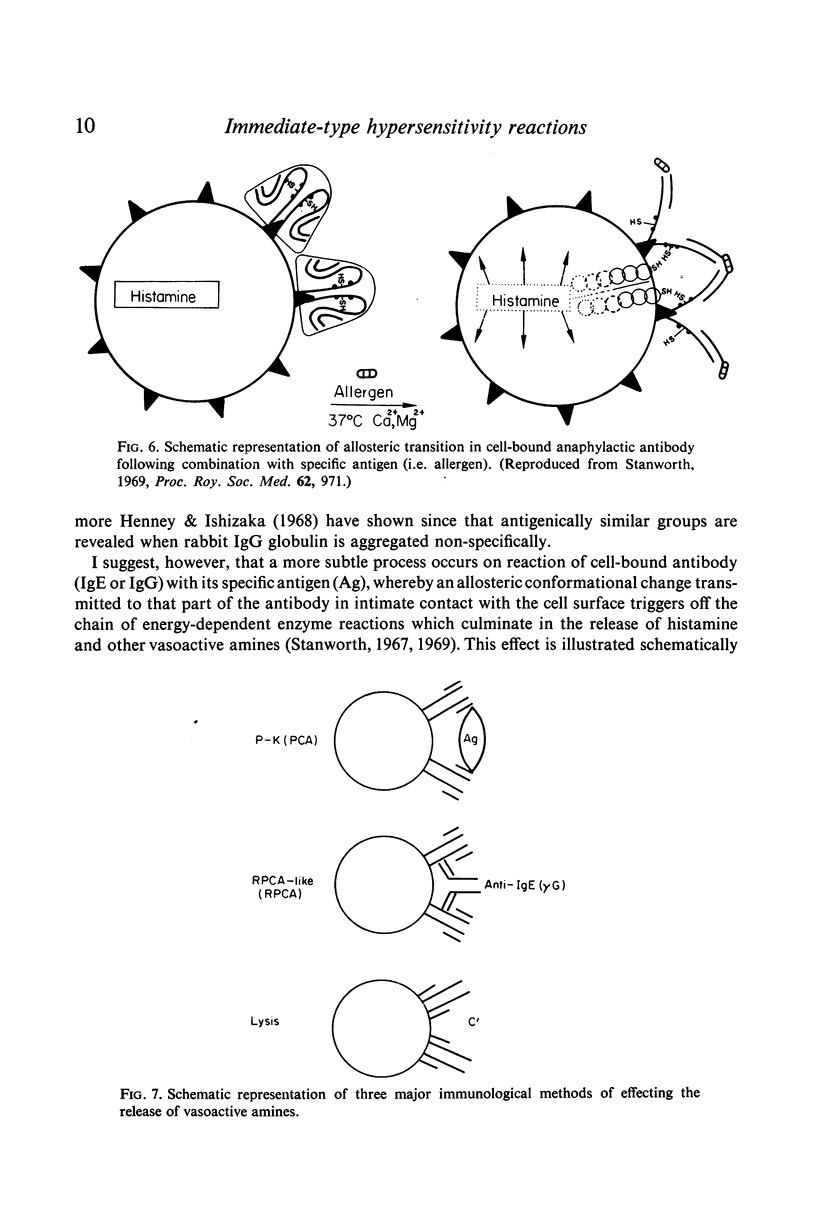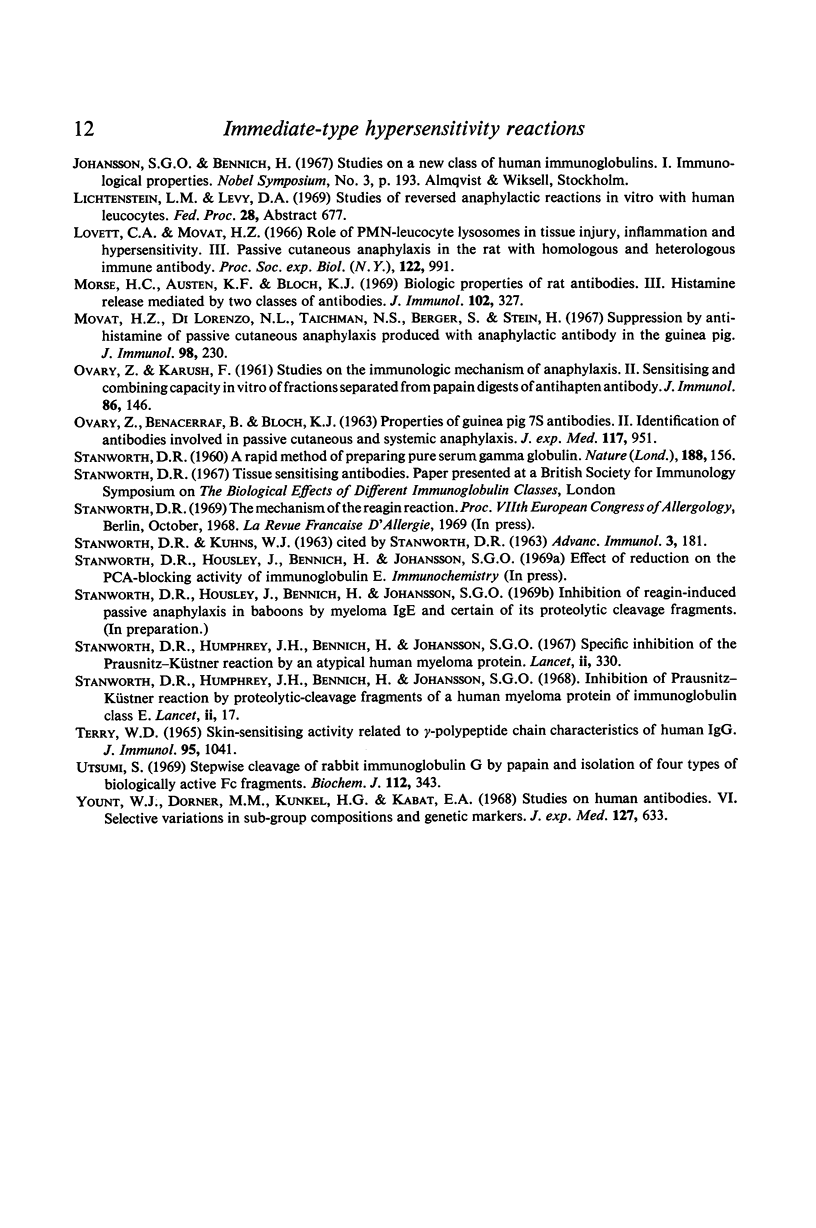Abstract
The properties of the main types of anaphylactic antibodies are compared. Their modes of action are considered in immunochemical terms in relation to recent findings about the mechanism of immediate hypersensitivity reactions in humans, which have been obtained from studies facilitated by the use of a myeloma form of IgE.
It is suggested that the combination of cell bound anaphylactic antibody with specific antigen (allergen) induces a conformational change within the Fc region of the antibody molecule, and this initiates a critical reaction at the cell surface which is responsible for the activation of the series of enzyme reactions involved in the release of histamine and other vasoactive amines.
Full text
PDF